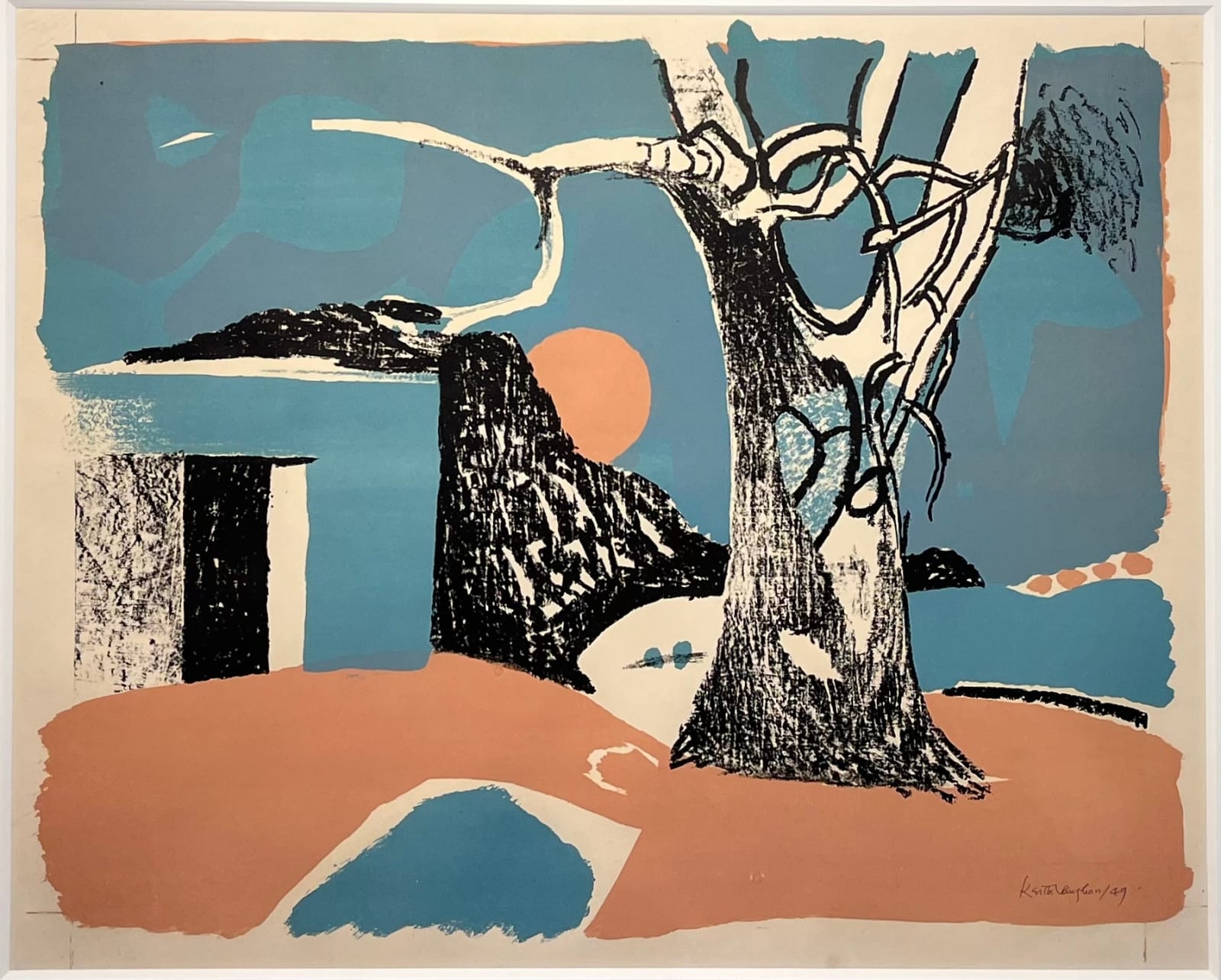
Keith Vaughan (1912-1977)
Winter Landscape, 1949
Original lithograph in three colours (burnt orange, chrome oxide green and black)
Signed and dated Lower right
Signed and dated Lower right
41.4 x 52.3 cm
Framed. 71.1cm x 61cm
Framed. 71.1cm x 61cm
Edition 50 (?) with an unknown number of proofs
£ 4,800.00
Vaughan produced eight original lithographic prints between 1949 and 1953. Unlike Colquhoun, Minton and Clough, who adopted a more systematic approach, his print production was surprisingly arbitrary. For instance, we...
Vaughan produced eight original lithographic prints between 1949 and 1953. Unlike Colquhoun, Minton and Clough, who adopted a more systematic approach, his print production was surprisingly arbitrary. For instance, we can only guess at his edition sizes. While most of his lithographs are signed and dated, curiously, none are numbered.
A green barn with an open door, at the left, is counterbalanced by a large tree, whose bare branches suggest the time of year to be early winter. Vaughan’s friend Gordon Hargreaves, who conducted a thoughtful and detailed study of his lithographs, believed this depicted a twilight scene with a blood-red moon (rather than a setting sun) emerging from behind a distant hill. This interpretation is plausible, as moonlit landscapes had been a common subject for Vaughan and other Neo-Romantic artists. Hargreaves also speculated that Rex Nan Kivell or Harry Tatlock Miller of the Redfern Gallery gave the print its title in the mid-1960s.
A green barn with an open door, at the left, is counterbalanced by a large tree, whose bare branches suggest the time of year to be early winter. Vaughan’s friend Gordon Hargreaves, who conducted a thoughtful and detailed study of his lithographs, believed this depicted a twilight scene with a blood-red moon (rather than a setting sun) emerging from behind a distant hill. This interpretation is plausible, as moonlit landscapes had been a common subject for Vaughan and other Neo-Romantic artists. Hargreaves also speculated that Rex Nan Kivell or Harry Tatlock Miller of the Redfern Gallery gave the print its title in the mid-1960s.
Join our mailing list
* denotes required fields
We will process the personal data you have supplied in accordance with our privacy policy (available on request). You can unsubscribe or change your preferences at any time by clicking the link in our emails.